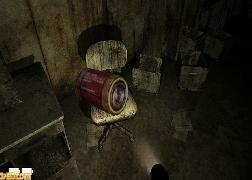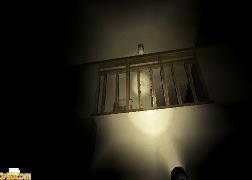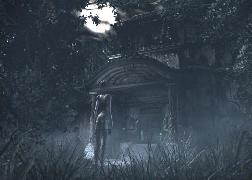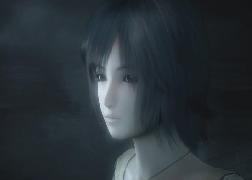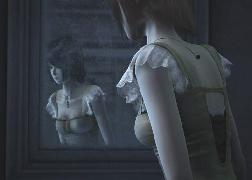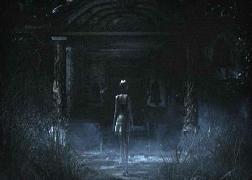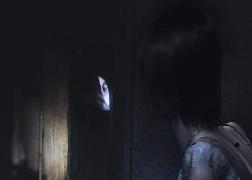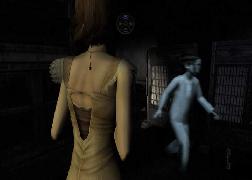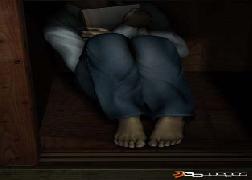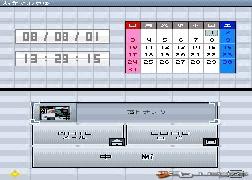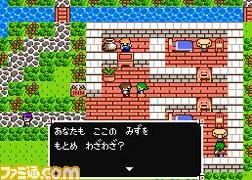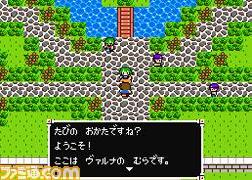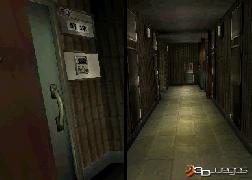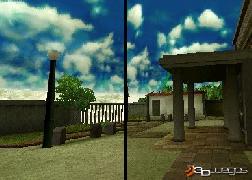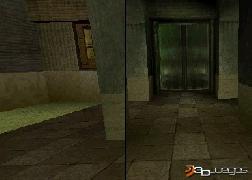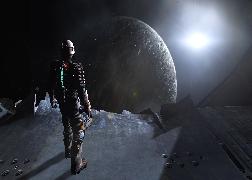Platforms: Wii, PS2, PSP
Release Date: 2009-12-08
Regions: USA Japan Europe
Chris’s Rating: ★★★☆
This not-quite-perfect remix of the original Silent Hill is a fantastic new direction for the series.
This review was written by my good friend, Casey Richardson. Thanks Casey!
Silent Hill: Shattered Memories is the latest installment of Konami’s seminal survival horror series. The series is well known for its nightmare world tranformations and its preference for symbolism and thought provocation over explicit horror. None of the games in the series have done this more successfully than Silent Hill 2, undisputedly the pinnacle of the series, and, in my opinion, one of the best games of all time. Those are big shoes to fill and subsequent releases have had smaller and smaller feet so to speak. For Shattered Memories, Konami has opted to use an external developer, a practice in place after the dismal Silent Hill 4: The Room. They went with Climax Studios, which had previously developed Silent Hill: 0rigins for the PSP. Shattered Memories was developed specifically for the Nintendo Wii, and that’s what is being reviewed here, but let it be known (and then promptly forgotten) there are PS2 and PSP ports as well.
Shattered Memories is a reimagining of the original Silent Hill, which first appeared on the Playstation way back in 1999. It must be stressed this is most definitely not a remake. You play as the character Harry Mason, who regains consciousness from a car crash, caused by the icy roads from a snow storm and his bad driving apparently. I don’t know, maybe he could have avoided the whole mess if he’d equipped the right tires. Realizing his little daughter, Cheryl, is nowhere to be seen, Harry starts off in an epic search, which will have him wandering all over the ghost town that is Silent Hill. While the game begins in roughly the same fashion as the original, after that it’s a whole new ball game. Yes, you’re going to traverse familiar environments and run into recognizable characters, but how the story progresses is nothing like the original.
When you first boot up the game, you’re assaulted with an FBI looking warning about how the game is going to mess with you. “Psychology Warning: This videogame psychologically profiles you as you play. It gets to know who you really are then uses this information to change itself. It uses its knowledge against you, creating your own personal nightmare. This game plays you as much you play it.” This warning isn’t just hyberbole–it actually translates into real game mechanics. For example, during conversations you occassionally have contol of where Harry is looking. So, if you stare at a girl’s boobs during this time, the game is going to know you’re a pervert and will deal with you accordingly. Believe me, you are going to have plenty of opportunities like this. It’s pretty awesome. The town is littered with posters, flyers and objects which the game uses to find out what things interest you. What this all boils down to is that Shattered Memories is more about psychological horror than survival horror.
Player controls are mapped to the nunchuk, with the Z button to run (it’s more of a slow jog actually, as Harry isn’t exactly the athletic type). The flashlight, one of the staples of the series, is controlled using the Wii remote and it works as well as can be expected. The Wii remote functionality is put to absolutely great use in this game, especially with Harry’s cell phone. The B button is used to focus Harry’s attention on objects and it’s used extensively. This focus mechanic is also crucial to the game figuring out the player’s likes and dislikes.
It wouldn’t be a proper survival horror title without some door unlocking puzzles, so yeah this game’s got ’em. Your pet monkey will have no problems figuring out all but a few of them. They all involve putting the Wii remote’s capabilities to good use and they all feel well implemented, so even the simplest of puzzles are satisfying and enjoyable. It’s worth noting, due to the nature of progression in Shattered Memories, even the most complex puzzles’ solutions will always be found in the immediate area. No backtracking to found here and good riddance I say.
The music is this game is subdued but chilling. As far I can tell, the soundtrack is all new material. Akira Yamaoka once again composed the music, but unfortunately this is probably his final involvement with the series as he recently left Konami. The rest of the sounds in the game are adequet. The familiar static noise system is once again in place and used as one could expect in the chases, but it’s also used to find what are essentially journal entries as well phone numbers necessary for progression. One super nitpicky thing I noticed is the voices always sound like straight up recording booth sessions. There are a number of sequences where Harry and another character are having a discussion while walking down the street, but there isn’t any post processing done to get them sounding like they are actually outside.
Shattered Memories has some of the best replayability I’ve ever seen in a game. To really appreciate this title, you have to play through it at least twice. I would strongly suggest playing through the first time “honestly.” That’s to say when the psychologist asks you a question, give him the answer you really, truly believe. In doing so you will be surprised how well the game assesses you when that moment arrives. Then for your second playthrough, just give the opposite answers and it’ll be like playing as your evil twin. Most people are going to finish the game in just a few sittings as the game really doesn’t take more than 6 hours to beat. It has something like five different endings, and for the hardcore fans of the series you’ve probably already guessed they’ve included another crazy UFO ending.
Let’s turn our sights to the things that don’t work so well. First in my mind are the damn chase sequences. In Shattered Memories the world changing transformation causes the environment to freeze over, some faceless monsters come out and Harry is forced to run for his life. While I like the idea where the player has literally no way to fight back, and some other games have done this admirably (check out Chris’ review of Hellnight for a great example), the implementation here leaves a lot to be desired. Ultimately, they are just frustrating sequences where you run around blindly until you happen upon the exit. Supposedly you can use your GPS map function on your cell phone to track your path, but the game doesn’t pause if you use it and you can’t run while it’s up. The only options of fighting back are shaking off enemies, knocking over objects (control wise this works maybe 25% of the time) to slow the baddies down, or finding a flare to hold off the enemies for a brief period of time. Another option at your disposal are hiding places like lockers or under beds. This feature is utterly useless. The creature chasing you passes by, almost leaves the area only to immediately come back, searching. Since there’s never an opportunity for you to escape, you can only wait until the enemy has decided to find you and pulls you out of the hiding spot. This happened every single time I tried to hide, so eventually I just completely ignored the hiding spots. Despite all these shortcomings, the chases do get your blood pumping and there are a few instances where the chases are more interesting than just escaping.
There’s a real lack of variety of enemies in this game. In fact, there’s only one type and no bosses at all. They didn’t even bother to add the requisite zombie dogs. What’s a survival horror game without evil canines?
Let’s get one thing straight: this game is not scary. It’s definitely creepy and it has a really great, dark atmosphere, but if you’re looking for a game to keep you up at night this is not that game. They have plenty of jump out scares but they are actually completely telegraphed, and thus negated, due to the static noise mechanic. The static builds as you approach the scary object and when it crests something falls over or rolls around. The first time is a bit surprising, but it quickly becomes monotonous and lame. Unlike previous Silent Hills, enemies come out only during the nightmare world transformations. What this means is you know there’s nothing of harm as you travel around the town. It’s not until the world starts to freeze over that you will get that sinking feeling.
Lastly, the visuals are a bit underwhelming. We are all familiar with the graphical limitations of the Wii, but Climax should have invested more resources into the art creation. At best, Shattered Memories looks like a mediocre PS2 title. The freezing over world transformation effect is nice, but one can only wonder how much more amazing it would have looked on a more powerful machine and in HD.
In summary, Silent Hill: Shattered Memories is surprisingly successful, boldly taking the series in a new direction. There are definitely a number of issues that should be addressed in future installments, but overall the good definitely outweighs the bad. If Shattered Memories were a movie it would be considered an art-house film and not a main stream Hollywood movie. Those interested in storytelling and atmosphere are going to love it. Conversely, those interested more with action and scares are probably going to hate it. Flawed but lovingly crafted it’s a great new direction for the series.




